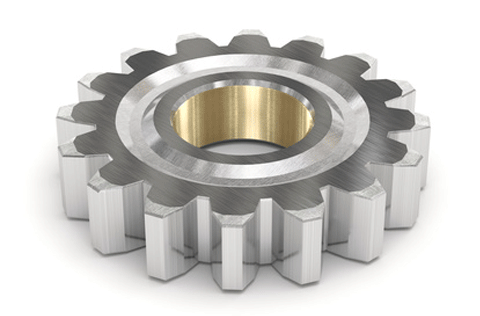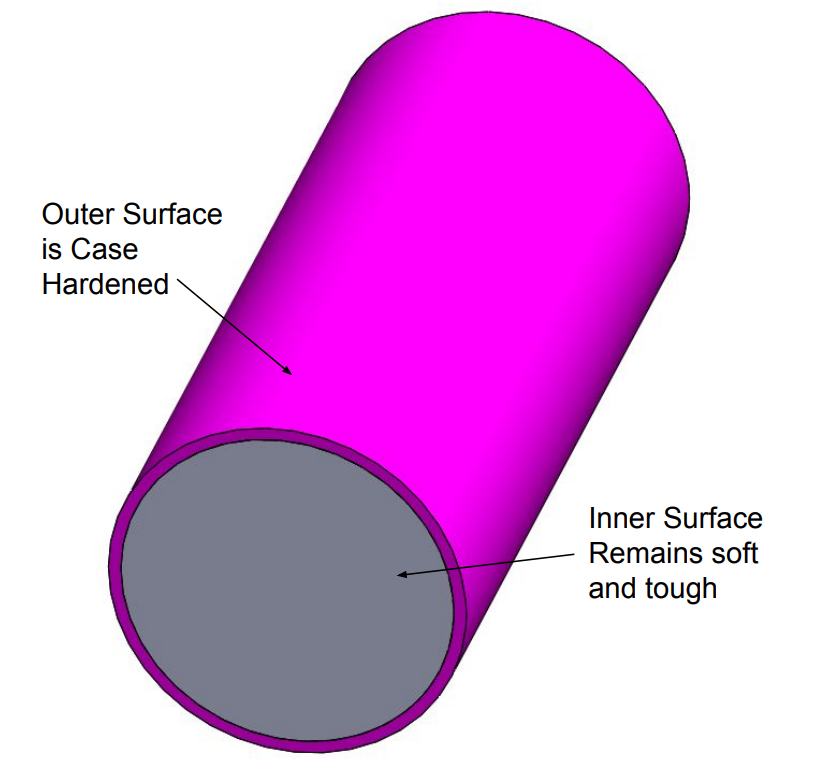A material’s abrasion and indentation resistance depend on its hardness. Therefore we need to increase the material hardness over the outer surface to increase indentation and abrasion resistance. In this scenario, we don’t need to harden the material throughout its thickness. Metal Case or surface hardening is process to increase a component surface hardness.
What is metal Case Hardening Process?
The case hardening process hardens the outer surface of the metal to resist wear and erosion, whereas the inner surface remains soft and tough to handle impact load.

Why we need Case Hardening?

A material indentation and abrasion resistance increase with the increase in hardness. Therefore manufacturer do the metal surface hardening to increase material indentation and abrasion resistance.
Part impact resistance does not change after surface hardening because the material inner surface remains soft and tough.
What type of materials can be surface hardened?
Mostly we can case-harden ferrous materials. But titanium and aluminum are the exceptions. Following is the list of ferrous materials that we can surface harden.
- Low and High Carbon Steel
- Stainless Steel
- cast iron
- Tool Steel etc.
Types of Surface Hardening Process
Following types of surface hardening processes are available in the market.
- Case Carburizing
- Cyaniding
- Nitriding
- Flame Hardening
Case Carburizing
Case carburization process involves heating the steel below the melting point in the presence of high carbon material such as charcoal.
As the result of carburization, the material hardness increases because the outer surface absorbs the carbon. Depth of carburization depends on the time of carburization and temperature.
Cyaniding
Cyaniding involves immersion of material in the bath of sodium chloride, sodium carbonate, and sodium cyanide at around 900ºC and then quenching in cold water or oil. It has the advantage of uniform hardness and a good surface finish.
Nitriding
Nitriding involves heating of steel above 500ºC in the presence of ammonia. It results in the formation of nitrides on the surface that is hard.
Flame Hardening
The Flame hardening process involves heating the surface to be hardened using oxyacetylene flame up to the required temperature and then quenching it in water or oil. This process has the advantage of the possibility of localized hardening.
Advantages of Surface Hardening
- Improves abrasion and indentation resistance.
- Reduced Heat-Treatment cost
- Part inner core mechanical properties do not change with surface hardening.
- Improves product life.
Applications of Surface Hardening
Here is the list of parts that are case hardened.
- Gears
- Cutting tools
- injection molds
- Engine Camshafts
- Rifle Bolt

Add a Comment